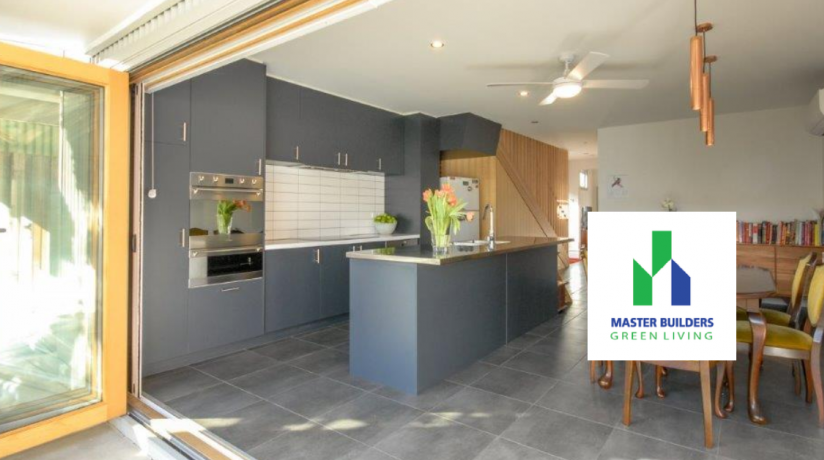Background
The National Energy Productivity Plan (COAG 2015), agreed to by the Council of Australian Governments Energy Council (COAG Energy Council) in December 2015, aims to improve Australia’s energy productivity by 40 per cent between 2015 and 2030. The Trajectory for Low Energy Buildings (2018) was produced as a result of this. It considers opportunities for new homes and for improving existing residential buildings.
Efforts until now have focused mostly on the energy efficiency of new houses. With less than 2% of building stock replaced each year, there is also a need to address housing built before any substantial energy efficiency measures were required (Whitehouse et al 2018). 46% of the stock built before 2015 is expected to still be in use in 2050, highlighting the importance of retrofit (ClimateWorks 2020).
A report produced by Sustainability Victoria (2016) found that the average energy rating of pre-1990 houses was 1.57 Stars and post-1990 houses was 3.14 Stars. In 2005, housing minimum efficiency regulations required new houses to be designed to achieve a minimum of 5 Stars and this was increased to a minimum of 6 Stars in 2011. There is clearly huge potential to increase the energy efficiency and thermal-comfort levels of the existing housing stock.
While the star rating is about the energy use required to heat and cool the house to keep internal parameters within set temperatures, it is also an indication of temperature fluctuations within those houses. It is generally accepted that cold temperatures and houses have detrimental impacts on human health. It is also now recognized that heat spells also affect human health and consequently increases the stress on, and cost of, public health systems (Sustainability Victoria 2020). A carefully structured and delivered program would provide a number of benefits to public health and the environment.
Energy efficiency upgrades range from simple actions, such as lighting upgrades, door seals and window coverings, to more involved measures, such as insulation upgrades, solar panel installation and window replacement. The result is reduced peak loads during extreme temperatures and improved demand management. This will, in turn, reduce costs across the broader energy network.
How would it work?
Rather than relying on a complicated system of rebates that are poorly understood, this scheme would be open to owner-occupiers, landlords and tenants. This proposal is for dollar-for-dollar grants or tax rebates for approved energy efficiency upgrades up to $20K for existing housing. An instant tax write-off scheme for landlords in addition to rebates/matching would be attractive, and require a simple tenant signature of consent for works to proceed.
While, previous programs have been problematic and open to rorting, steps taken since then in similar programs and the use of approved installers and licensed trades would limit these concerns. A research program evaluating different elements of the package and how it is undertaken would help to provide feedback for the program and evaluate outcomes.
Any program will also need to consider the impact that improved insulation levels and air tightness may have on increased levels of condensation and the resultant requirement for moisture management on previous construction systems.
The Victorian Government has produced a Residential Efficiency Scorecard, and independent accredited assessors could be used to identify approved works.
The cost of the scorecard assessment could be claimed back as part of the grant if works go ahead. Works could include insulation upgrades, double glazing, exhaust fan dampers/upgrades, draft sealing work, old appliance replacement, PV, solar hot water and heat pumps as prioritised by the Residential Efficiency Scorecard assessment.
Each Residential Efficiency Scorecard assessment will also include a risk assessment to ensure risks are flagged and managed prior to work being carried out. For example, an electrician would need to have carried out an inspection to verify the roof is safe and, at the same time provide covers to light fixtures and fans. Likewise, a plumber may need to confirm any services that have gas as a fuel source are in a suitable condition that will not create a risk. Approved insulation installers would need to have completed the Insulation Council of Australia and New Zealand’s (ICANZ) training program. A set percentage of work would undergo independent checks to ensure work has been undertaken to required levels.
Each upgrade would be entered into a database. This would lead to an improvement in the housing stock overall and to Australian housing data systems over time. An evaluation would run alongside the package to provide real-time feedback into the program and allow for fine-tuning to optimize performance. This would link in with the research which shows that restarting the economy through a sustainability focus will deliver more jobs now and into the future. Any program should leverage research opportunities to build an evidence base to strengthen retrofit experience, process and industry in Australia.
A recent study by RMIT (Willand et al 2020) shows that low-income households and renters have not taken up the benefits of programs such as these in the past. The program will also need to target these areas. This will reduce energy stress and inequality, have positive health outcomes and in turn reduce public health costs.
Benefits
This program would likely be sufficient to lift the average performance of existing housing built prior to the introduction of the 5 and 6-Star requirements from around 1.5 Stars to between 5-6 Stars and to lift housing built since the mid 2000s to over 7 Stars. This would lower living costs and improve thermal comfort, health and wellbeing for occupants, particularly those in vulnerable households.
Evaluation will show how this investment provides local jobs for Australian workers, while benefiting Australian households both immediately and into the future. It will also calculate energy and carbon savings from the scheme, contributing to Australia’s emissions targets and productivity.
These sorts of work offer opportunities to a number of different trades and also to manufacturing, retail and transport. It would also offer an opportunity for the retrofit industry to move from a more siloed approach of delivering one or two retrofits to delivering a more comprehensive list of retrofits.
A gold-standard package with guaranteed quality and benefits linked to greenhouse gas reduction from existing housing that follows the current National Energy Productivity Plan (NEPP) project and Australia’s commitment to the Paris Agreement.
References:
ClimateWorks Australia (2020). Solutions, Actions and Benchmarks for a Net Zero Australia.
https://www.climateworksaustralia.org/wp-content/uploads/2020/04/CWA-DECARBONISATION-FUTURES-2020-TECH-REPORT.pdf
Coalition of Australian Governments Energy Council, 2018, Trajectory for Low Energy Buildings, Commonwealth of Australia.
Coalition of Australian Governments Energy Council, 2015, National Energy Productivity Plan, Commonwealth of Australia.
Sustainability Victoria, 2020, Linking Climate Change and Health Impacts, Victorian Government.
Sustainability Victoria, 2016, Energy Efficiency Upgrade Potential of Existing Victorian Houses, Victorian Government.
Whitehouse, M., Osmond, P., Daly, D. Kokogiannakis, G., Jones, D., Picard-Bromilow, A. andCooper, P. (2018), Guide to Low Carbon Residential Buildings – Retrofit, Low Carbon Living CRC.
Willand, N., Moore, T., Horne, R. and Robertson, S. (2020). Retrofit Poverty: Socioeconomic Spatial Disparities in Retrofit Subsidies Uptake. Buildings and Cities, 1(1), pp. 14–35. DOI: https://doi.org/10.5334/bc.13






